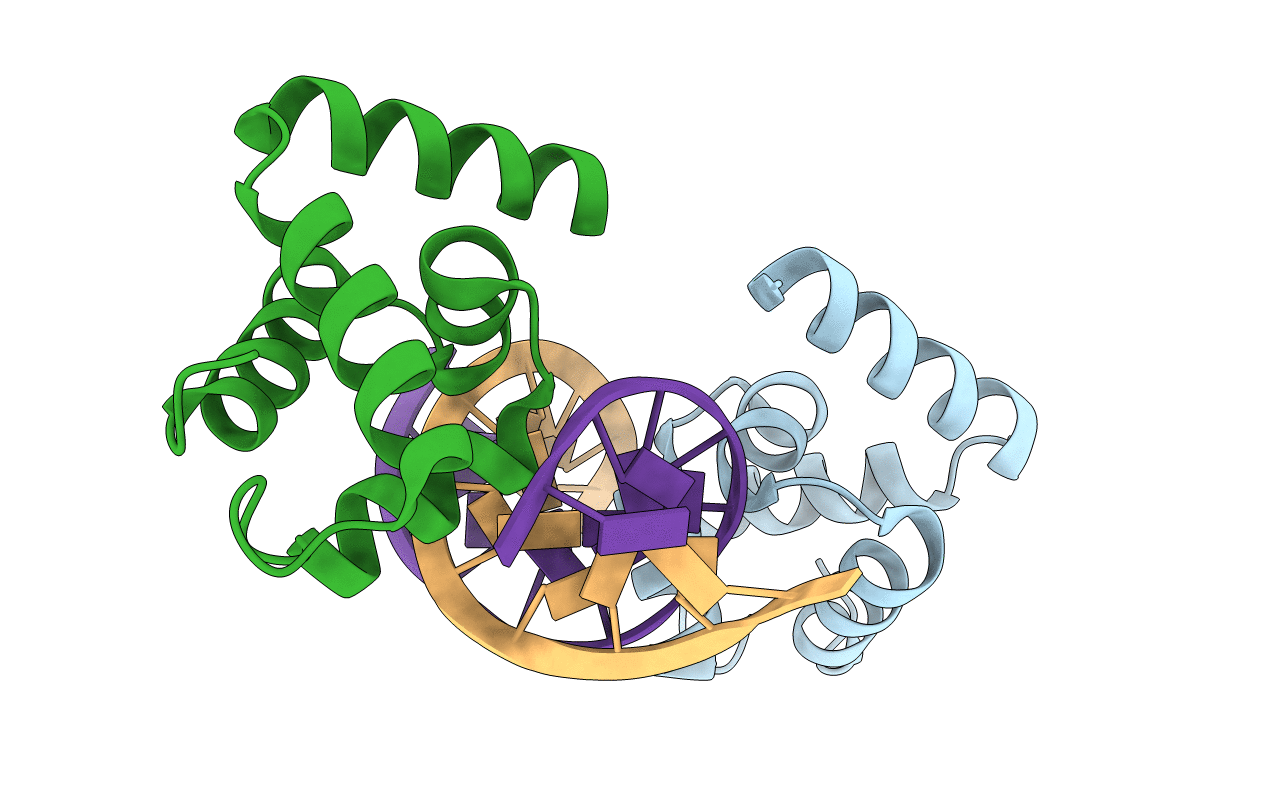
Deposition Date
2019-12-02
Release Date
2020-04-01
Last Version Date
2023-11-22
Entry Detail
PDB ID:
6LFF
Keywords:
Title:
transcription factor SATB1 CUTr1 domain in complex with a phosphorothioate DNA
Biological Source:
Source Organism:
Homo sapiens (Taxon ID: 9606)
synthetic construct (Taxon ID: 32630)
synthetic construct (Taxon ID: 32630)
Host Organism:
Method Details:
Experimental Method:
Resolution:
1.79 Å
R-Value Free:
0.27
R-Value Work:
0.22
R-Value Observed:
0.23
Space Group:
P 31


